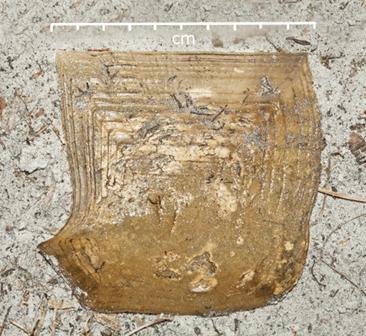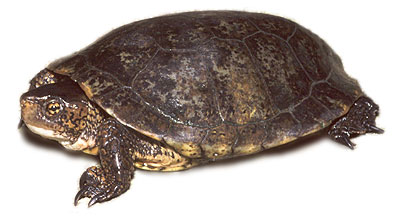The western pond turtle is one of only two native turtles found in Washington and Oregon; the other is the western painted turtle. Western pond turtles are not doing so well at the northern extent of their range in Washington. While historically they may not have been common this far north, they were essentially extirpated in the Puget Sound lowlands by the 1980s. In the mid-1990s there were only about 150 of these turtles found in Washington in two small populations in Skamania and Klickitat Counties.
Historically the species ranged from western Washington, through western Oregon and California to Baja California. Habitat destruction and introduction of non-native predators, such as large-mouth bass and bull frogs have contributed to their decline. A wide range of predators potentially forage on the turtles including coyotes, wading birds, snakes, black bear, otters, and dogs. Raccoons will dig up the nests and eat the eggs. Historical information indicates that people trapped these turtles and noted that they fetched a price of “…$3-$6 per dozen and were most in demand about April”. I’m not sure why April – maybe they were easier to catch them as they were preparing to mate – or maybe folks just had a hankering for them after a long winter(?).
Pond turtles are relatively small – about 4-7 inches in length and hatchlings are about an inch in length. These turtles can be olive, dark brown, or black in color with fine black or brown markings on the dorsal scutes (individual scale-like patches on the dorsal shell, or carapace). The plastron, or underside, is yellowish with dark patches. It is a rather handsome little turtle. Males and females of the species look similar but the males have a slightly more “flattened” carapace. Acinemys – actin for ray or beam, and emys for turtle; and marmorata from the Latin for marbled, referring to the marbled carapace pattern.
Pond turtles generally prefer calm water such as ponds, oxbows, and slower moving streams and pools, with vegetated banks and rock or log basking sites. They are rather secretive and wary – when disturbed the seek cover in the water and often lurk adjacent to the bank where there is overhanging vegetation. Pond turtles are omnivorous but more often eat animal matter over plants – the youngsters are more carnivorous and shift to a more omnivorous diet as they mature – which is the case for many animals, indicative of the need for more protein for fast growing youngsters. Similar, I suppose, to how my daughter and friends would hoover out the fridge as fast as I could fill it. The turtles will eat a variety of insects, frogs and frog eggs, fish, and carrion. Teenagers are more discriminating.
Mating occurs between May and August when 5-11 eggs are laid in buried nests, usually within 300 ft of the water. Females will find a suitable site with dry soil, sparse vegetation, and a southern exposure to catch solar radiation. After excavation and egg laying the hole is filled with a mixture of vegetation and soil to provide an air space. Wet soil is used to plug the exit hole. Hatching time is about 75 days, after which the 1-inch-long hatchlings will head for the water or remain in the nest over the winter and emerge next spring. It is thought that western pond turtles can live to be 50 years old and they do not reach sexual maturity until 10-15 years old, so natural recovery in populations is slow. You can determine the approximate age of a turtle by counting the number of rings on the carapace scutes.

The Woodland Park Zoo in Seattle has been working with the WA Department of Fish and Wildlife since 1991 in helping to preserve the species by protecting nests and raising hatchlings as part of a “head-start” program to get the youngsters larger before releasing them back to the wild. Through this program 2,000 have graduated from head start and recent surveys indicate about 800 have survived – which is not bad. http://www.youtube.com/watch?feature=player_embedded&v=onMjKKfKuMw
I’ve seen them in Pierce County, WA and in northern CA where they are much more common. I once worked on a restoration of an old Metro sewage pond along the Mercer Slough and we had survey the site for western pond turtles prior to the restoration. We found none, but lots of introduced red-eared sliders, an introduced, non-native turtle species. While they drained the pond to take out some nasty sediments before restoration, we prepared laminated identification cards for the construction folks and gave them a quick class on turtle identification.
They were supposed to call us if they thought they captured a pond turtle during the slow draining of the pond, but to just release the other species into the adjacent slough. Sure enough, I must have fielded five calls where they were sure they found a pond turtle. The crew was quite proud about their accomplishment, but alas, they were all lowly red-eared sliders.
Keep an eye out on sunny spring days for these guys basking and trying to warm up.
